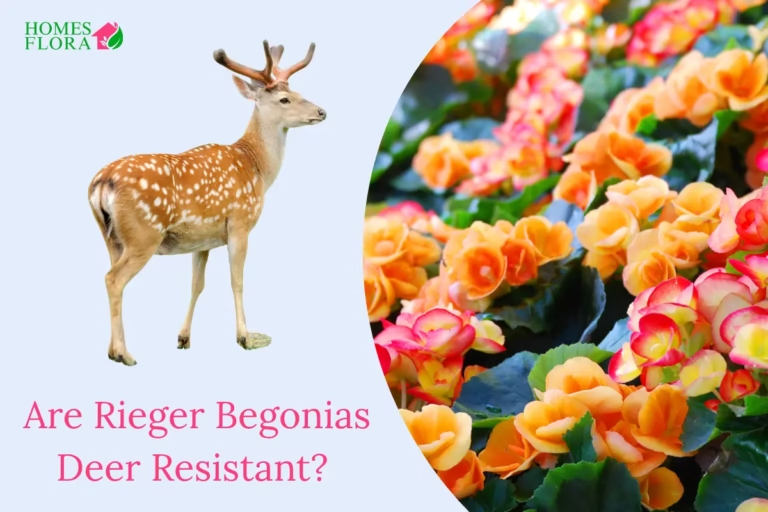Begonia Mallacoota: Grow and Care the Rare Australian Beauty

If your space is too dry, too dark, or just too busy for high-maintenance greenery, you’re not alone. Many plant lovers struggle with finding something both beautiful and resilient. That’s where Begonia ‘Mallacoota’ comes in — a rare, low-fuss Australian hybrid that turns neglect into art. With its iridescent pink-and-silver leaves, this begonia doesn’t just survive—it thrives where others wilt. Whether you’ve had bad luck with orchids, forgotten to water a pothos, or lost hope for that shady corner, this is the plant that changes the game.
Botanical Informantion of mallacoota begonai
Category | Details |
|---|---|
Family | Begoniaceae (Fibrous-rooted begonia subgroup) |
Scientific Name | Begonia mallacoota (Hybrid origin) |
Common Names | Mallacoota Begonia, Silver Pink Begonia, Australian Hybrid Begonia |
Native Region | Mallacoota, Australia (Rainforest understory) |
Mature Size | 20-30 cm tall × 25-35 cm wide (Compact, clumping habit) |
Soil pH | 5.5–6.5 (Slightly acidic; avoid alkaline soils) |
Toxicity | Mildly toxic if ingested (Oxalates) – Keep away from pets/kids |
Lifespan | 3-5+ years (Perennial with proper care) |
Growth Speed | Slow to moderate (Faster in high humidity) |
Special Features | Watercolor-like foliage, Stress-induced color changes, Rare blooms |
USDA Zones | 10-11 (Typically grown as a houseplant elsewhere) |
What Is Begonia Mallacoota?
The pint-sized showstopper of the begonia world—a rare Australian native that’s more living watercolor than ordinary houseplant. With silver leaves splashed with pink veins and edges dipped in burgundy, this compact stunner thrives where other exotics fail. Unlike high-maintenance tropicals, it’s forgiving of imperfect light and sporadic watering, making it a holy grail for:
- Urban junglists craving gallery-worthy foliage
- Serial overwaterers who kill fussy plants
- Terrarium enthusiasts needing drama in small spaces
Hidden Fact: Its leaves change hues under stress (like a mood ring), revealing deeper reds when thirsty—a built-in hydration alert!
Origin & History of The Accidental Masterpiece
Born in the rainforests of Mallacoota, Australia, this hybrid begonia wasn’t bred in a lab—it’s a wild-crossing wonder discovered by chance. Unlike common begonias, its silver-pink veined leaves evolved to thrive in humid shade, making it a fighter by nature. Named after its homeland, it’s a living testament to nature’s artistry—untamed, resilient, and unexpectedly low-fuss.
Why Is Begonia Mallacoota So Special?
Rarity: Few nurseries propagate it authentically—most “Mallacootas” are mislabeled hybrids. Its wild origins mean no two plants look identical (your piece is truly one-of-a-kind).
Survival Superpowers: Laughs at dry air (unlike tropical divas) Keeps its colors even in low light (no grow lights needed).
Aesthetic Uniqueness: Leaves mimic watercolor paintings—pink veins on silver, dark edges.Compact size fits terrariums or tabletops (unlike sprawling begonias).
Hidden Status Symbol: Plant collectors hunt for the true Mallacoota—it’s the “sleeper hit” of rare begonias.
How to take care of Begonia Mallacoota
Begonia ‘Mallacoota’ is easy to care for and loves a little attention. Give it the right light, soil, water, and warmth, and it will stay happy and colorful all year long.
Light Requirements
Begonia ‘Mallacoota’ thrives in bright, indirect light—mimicking the dappled sun of its native Australian rainforest floor. Direct sunlight scorches its delicate foliage, while deep shade can mute its vivid colors and slow growth. An east-facing window or a spot with filtered light works best. In low-light homes, supplement with a full-spectrum grow light to maintain its signature pink-and-silver glow.
Soil Needs
Begonia ‘Mallacoota’ loves a loose, breathable soil mix that feels like its natural rainforest floor. The ideal combo? About 50% potting soil, 30% perlite, and 20% orchid bark. This blend keeps moisture balanced while letting roots breathe—essential for avoiding the dreaded root rot. Skip dense garden soils or anything that feels heavy in the hand; they hold too much water and suffocate the roots. And when potting, always go for containers with drainage holes—terra cotta pots are a top pick, since they help pull excess moisture away from the soil.
watering
Begonia ‘Mallacoota’ likes its soil a little damp, but not soaked. Wait until the top inch feels dry, then give it a drink. Too much water can rot the roots, so never let it sit in a puddle. Use clean, room-temperature water—tap water with chemicals can make the leaves unhappy. A pot with drainage holes helps extra water escape, and a quick finger test is all you need to know when it’s time to water again.
Temperature & Humidity
Begonia ‘Mallacoota’ likes it warm and comfy—just like you. Keep daytime temps between 18–26°C (64–78°F), and don’t let it drop below 15°C (59°F) at night. It also enjoys a bit of humidity (40–60%), but its thick leaves can handle drier air too. Keep it away from cold drafts or heaters, and try placing it near other plants or on a pebble tray to keep its leaves happy.
Fertilizer
Feed Begonia ‘Mallacoota’ gently during spring and summer. Use a diluted liquid fertilizer (about 1/4 strength) every 4–6 weeks. A balanced 10-10-10 or a leaf-friendly blend works great. Organic options like fish emulsion or seaweed extract are safe and soft on roots. Skip feeding in winter—it’s rest time. Too much fertilizer can burn the leaves, so flush the soil with water every few months to keep it clean.
Pro tip: Fertilize only when the soil is moist, not dry to prevent root burn.
Pruning
Prune Begonia ‘Mallacoota’ to keep it healthy and full. Snip off any dead or damaged leaves at the base using clean scissors. If stems get too tall or leggy, trim just above a leaf node—this encourages bushier growth. In spring, you can cut back up to one-third of the plant to refresh its shape. Bonus: you can use those cuttings to grow new plants! After pruning, mist the cut spots gently, but don’t soak them—too much moisture can invite fungus.
Common Pests, Issues & Solutions
Spider Mites
These tiny vampires suck sap, leaving yellow stippling and fine webbing. Isolate immediately and spray with neem oil solution (1 tsp neem + 1L water) every 3 days. Increase humidity to deter them – they thrive in dry conditions.
Mealybugs:
Cotton-like clusters in leaf axils signal infestation. Dab with alcohol-soaked cotton swabs, then treat with insecticidal soap. Check neighboring plants – they spread faster than gossip.
Powdery Mildew:
White fungal patches appear when airflow is poor. Trim affected leaves and spray with baking soda solution (1 tbsp baking soda + 1L water). Space plants properly and avoid wetting foliage when watering.
Root Rot:
Soggy soil leads to black, mushy roots. Unpot, trim rotten roots, and replant in fresh, dry mix. Going forward, water only when the topsoil is dry to the touch.
Leaf Drop:
Sudden temperature changes or drafts trigger this. Maintain consistent temps above 15°C and rotate the plant weekly for even light exposure. New growth will appear once stabilized.
Releated: Explore the Money Tree Vs Umbrella plant and Peace lily Vs calla lily to find more low mantainence plant.
Propagation: Water vs Soil Methods
Water Propagation
Snip a 4-inch stem with 2-3 leaves, ensuring a node is submerged. Place in filtered water (change weekly) near bright, indirect light. Roots emerge in 2-3 weeks – wait until they’re 2 inches long before potting in soil. This method lets you monitor root development but risks weaker transition to soil.
Soil Propagation
Take cuttings as above and dip the end in rooting hormone. Plant in moist perlite-peat mix, covering with a plastic bag to retain humidity. Keep at 21-24°C – roots form in 3-4 weeks. Tug gently to check resistance. This skips the water-to-soil shock but requires more patience.
Pro Tip: Propagate in spring when the plant is actively growing. Cuttings taken in dormancy often fail. Whether you choose water or soil, ensure tools are sterilized to prevent disease transmission.
Blooming Secrets: When & How to Get Flowers
While grown primarily for its stunning foliage, this begonia can surprise you with delicate blooms—if you crack its code. Here’s how to coax out those shy flowers and appreciate their subtle beauty.

Best Blooming Time: Nature’s Schedule
Expect potential blooms from late spring through summer, when daylight increases and temperatures hover between 20-26°C (68-78°F). Unlike common begonias that flower freely, Mallacoota blooms are opportunistic—they appear when the plant feels perfectly at home. Mature plants (2+ years old) are more likely to flower, so patience is key. In cooler climates, blooming may be sporadic or absent altogether.
How to Encourage More Blooms: The 3 Key Triggers
- Light Sweet Spot: Provide bright, indirect light (east-facing windows ideal). Too much shade = foliage only; harsh sun = scorched leaves.
- Controlled Stress: Let the plant get slightly root-bound—this often triggers flowering as a survival response.
- Seasonal Fertilizing: Use a high-phosphorus fertilizer (like 5-10-5) monthly in spring/summer to promote blooms. But go easy—overfeeding leads to leggy growth at the expense of flowers.
Avoid repotting during potential blooming periods, as this redirects energy to root growth instead of flowers.
Bloom Appearance & Scent: Subtle but Special
When it does flower, expect small clusters of pale pink or white blooms on slender stalks, contrasting beautifully against the metallic foliage. The flowers are fragile-looking but charming, with a mild, sweet scent—more noticeable in the early morning. Don’t expect overpowering fragrance; this begonia’s magic lies in its visual poetry rather than perfume. The blooms last 1-2 weeks before fading, so enjoy them while they last!
Pro Tip: Some growers remove buds to conserve the plant’s energy for foliage growth—your call based on priorities.
Why You’ll Fall in Love with this?
This isn’t just another houseplant – it’s a living mood ring for your home. The way its silver-pink leaves intensify colors when thirsty, or how it thrives despite your busy schedule, feels like magic. Unlike high-maintenance divas, it rewards neglect with beauty, making you feel like a plant whisperer. Plus, those rare delicate blooms? They’re like getting a surprise gift from nature.
It’s the perfect blend of rare + resilient – a plant that’s as forgiving as it is breathtaking. That’s why you’ll adore it.


